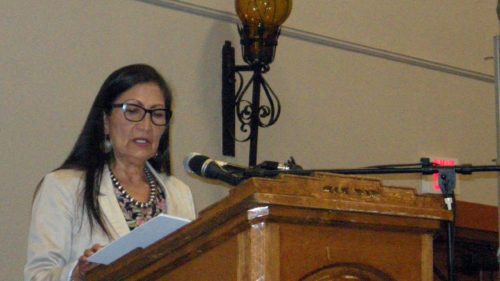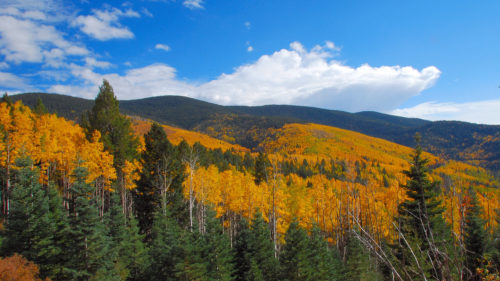Rocky Mountain sheep license numbers are inching up. Three ram licenses added to this year’s Latir area hunts brought the draw license totals to 12 rams, and the game department is in the early planning stages to open two new hunt areas, the Rio Grande and Dry Cimarron, to hunts in the 2015-2018 rule-making cycle. It’s also proposing to add a second, 12-license ewe hunt in the Latirs to help keep the population within its winter range habitat limits.
But maybe the biggest news springs from the ashes of the 2011 Las Conchas fire in the Jemez Mountains.
Though the huge fire was devastating in many ways, “We just created so much new sheep habitat with that big fire that it’s time” to start a new herd of Rockies in the Jemez, specifically Cochiti Canyon south of the Dome Wilderness, Rominger said.
The agency had been eyeing the Rio Grande gorge near White Rock for a transplant, but “we’ve always been a little hesitant because there was so little huntable public land there,” he said. “But the fire probably doubled the amount of total sheep habitat, especially Forest Service huntable land. That whole Cochiti Canyon was completely blown out by that fire.”
The department is negotiating with the U.S. Forest Service and will submit the project to the State Game Commission for approval in May. If all goes well, this August biologists will transplant 30 to 40 sheep from the Wheeler Peak herd to start one in the Jemez. The biologists estimate the Jemez habitat could potentially support 400 or more sheep, potentially the largest herd in the state.
The upper Rio Grande herd, started with transplants in 2006, has swollen to about 180 to 200 head, and the Dry Cimarron herd started in 2007 is at about 105 to 130. Both are ripe for a hunt, said Stewart Liley, big game biologist with the game department.
The department will propose a hunt along the western rim of the Rio Grande Gorge with at least one license, and perhaps multiple licenses in coming years if the herd continues on its current growth trajectory.
The Dry Cimarron, with mixed state and private land status, is more complicated. “We’re working to figure that out,” Liley said. With multiple landowners in the area and a mix of private and public land, “we’re trying to work with everyone to figure out the best route to ensure public access.”
That will likely involve a mix of private-land and public draw hunts, similar to the shared harvest negotiated on the Fra Cristobals and the Culebras range near the Colorado state line. Both ranges are entirely or mostly on private property.
Biologists hope to present at least preliminary proposals to the commission on May 15. They’ll also propose splitting the Latir Peaks ram hunt, so there would be two, two-license hunts instead of one hunt with four hunters as it is this year.
Overall, the Rocky Mountain sheep herds are doing well, Rominger said. He’s especially pleased that the Pecos herd, the state’s oldest extant population, is on the rebound after sinking to a low of around 100 sheep after highs of more than 300.
“It seems to be turning the corner and has enough base ewes to be increasing pretty dramatically, so it’s gone from 100 to possibly 200 sheep in the past few years. We think that at some point we may be able to increase licenses as those recruited sheep get a little bit older,” he said.
THE MONEY
Bighorn sheep management is not cheap, but revenues from license auctions and raffles fund almost all the state’s share of the $600,000 annual budget.
In this year’s January auction, the Rocky Mountain sheep hunt drew a winning bid of $170,000, while the desert sheep hunt went for a New Mexico record – $270,000. The raffles for Rocky and desert sheep tags kick in about $70,000 more each year.
Through 2013, the auction and raffle tags netted nearly $3 million to fund all the research and transplants that have paid off so handsomely, and this year’s will net about $450,000 more.
– John Crenshaw



